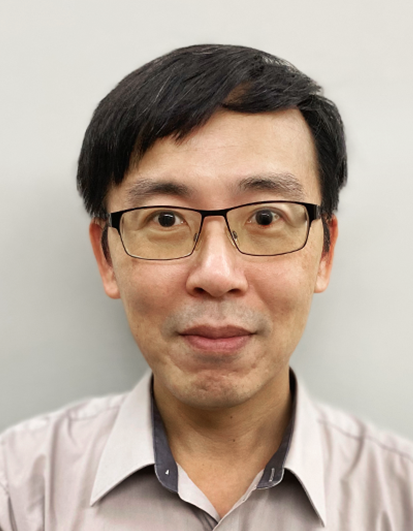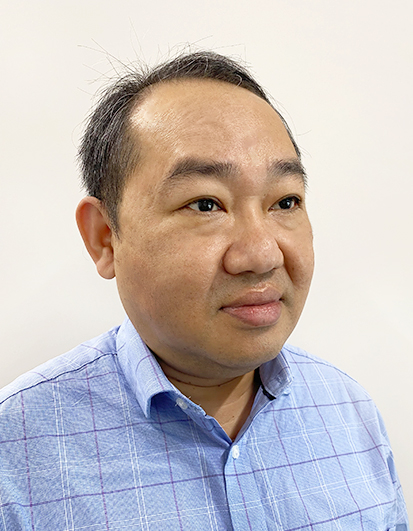Innovation
企業創新
Optimization of Airport Refuse Incineration’s Combustion Controls Helps Level Up Efficiency and Capacity
Having established a firm foothold in EfW plants as well as electrical and mechanical fields for over 20 years, ECOVE has been tasked with managing operations, carrying out annual repairs and revamps, or improving system and equipment functions for more than two-thirds of the 24 incineration plants in Taiwan. ECOVE is also the first company in Taiwan to bring its EfW technology abroad. The company’s extensive experience in the field of EfW plants covers not only the provision of professional EfW technology and operation management, but also customized equipment upgrades and efficiency improvement for EfW plants with different incinerator types and designs, thereby helping local governments and owners address livelihood issues related to waste disposal. Taoyuan International Airport is the gateway to Taiwan that domestic and international travelers must pass through. It is also the window to the world for Taiwanese people traveling internationally. As there are epidemic prevention and safety concerns related to the waste generated by travelers leaving and entering Taiwan, a Refuse Incineration Plant was constructed in Taoyuan Airport in 1999 (referred to below as Taoyuan Airport Refuse Incineration Plant). The plant is dedicated for use by the airport and was officially put into operation in 2004. With a double furnace design and rotary kilns, the plant is able to process 60 tons of waste per day. In addition to destroying the waste generated by flights and the terminals, the plant is also used to burn contraband materials seized by customs and aviation police, such as animal and plant products that violate quarantine regulations.
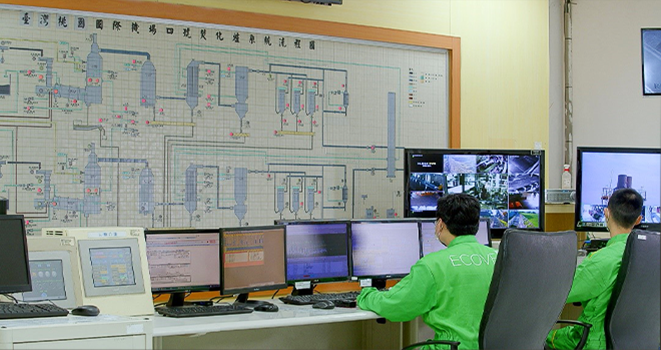
Staff monitor the operations of Taoyuan Airport Refuse Incineration Plant in the central control room.
Root Cause Analysis Allows Good Use of Existing Heat Sources to Dry Waste
Taoyuan Airport Refuse Incineration Plant adopts a rotary kiln design. Due to the complexity of the types of airport waste and higher water content of some of the waste, the plant used to keep relying on the heat provided by the burner so that the furnace temperature could comply with legal standards. This caused the problem of low processing quantity and high fuel consumption that has long plagued the Refuse Incineration Plant since the beginning of operations. The fuel consumption per ton of waste processed is much higher than general mechanical furnaces. Since January 1, 2011, ECOVE has officially took over the operations of the Refuse Incineration Plant. Combustion control has been prioritized as an important item for improvement. By improving the waste combustion quality, the operational functions have been effectively improved, raising the processing quantity from 4,700 tons per year to 11,000 tons per year. Combustion control of the waste incinerator is an extremely important part of the overall plant operations because if the waste incineration process can be maintained in a good and stable state over long periods of time, it can effectively increase the processing capacity and facilitate the subsequent removal of flue pollutants. In order to optimize combustion controls, ECOVE adopted the root cause methodology and found that the reason why Taoyuan Airport Refuse Incineration Plant was unable to maintain good spontaneous combustion was mainly due to the discrepancy between combustion air configuration and combustion air temperature. Therefore, ECOVE first focused on the utilization of heat energy. The company discovered that the combustion air did not utilize the existing heat energy to increase the temperature within the plant, which is why the burner had to be continuously used to provide the heat for drying waste. In order to better utilize the existing heat within the incinerator without affecting the original design, ECOVE used some of the heat source to preheat the combustion air. Furthermore, to increase the temperature of the combustion air, an outlet pipeline has been added directly to the exhaust port of the heat exchanger to channel the hot air to the wind hole in the front wall. The hot air has a temperature of around 250℃, which can effectively improve waste drying.
Increase Turbulence to Improve Incineration Efficiency
For waste to be completely combusted, three factors need to be considered: temperature, time, and turbulent flow. Originally, the combustion air at the rotary kiln of the Taoyuan Airport Refuse Incineration Plant was extracted by a fan from the waste storage pit, which then enters the rotary kiln from the wind hole in the front wall. The air is evenly distributed around the furnace and the average air speed is only 5.6 m/s, so the air pressure is very low. This prevents the combustion air from fully mixing with the waste. Therefore, the turbulence in the rotary kiln is low and it must depend on the burner to supply continuous heat to comply with the designed combustion quality. In order to increase turbulence and accelerate the burning of waste, ECOVE reconfigured the combustion air. The air intake was reconfigured into three different types of air flow to form asymmetric air distribution, allowing the air to fully mix with the waste and increasing turbulence intensity. The first type of air flow involves air surrounding the ring-shaped front wall. The second type of air flow involves air from small wind holes on the front wall, with a number of wind holes on the upper right corner sealed blindly so that the air volume is distributed asymmetrically and the air enters the furnace in a clockwise spiral along the furnace wall. The first types of two air flows are provided by primary air fans. Meanwhile, the third type of air flow comprises a flow of strong combustion-supporting air added from the bottom of the incinerator (also known as spray air), which is provided independently by idle blowers in the plant at an air pressure of about 500 to 600mmH₂O. The combustion-supporting air is concentrated in the waste feeding area to increase air turbulent flow and address the problem of insufficient air pressure, so as to improve incineration efficiency.
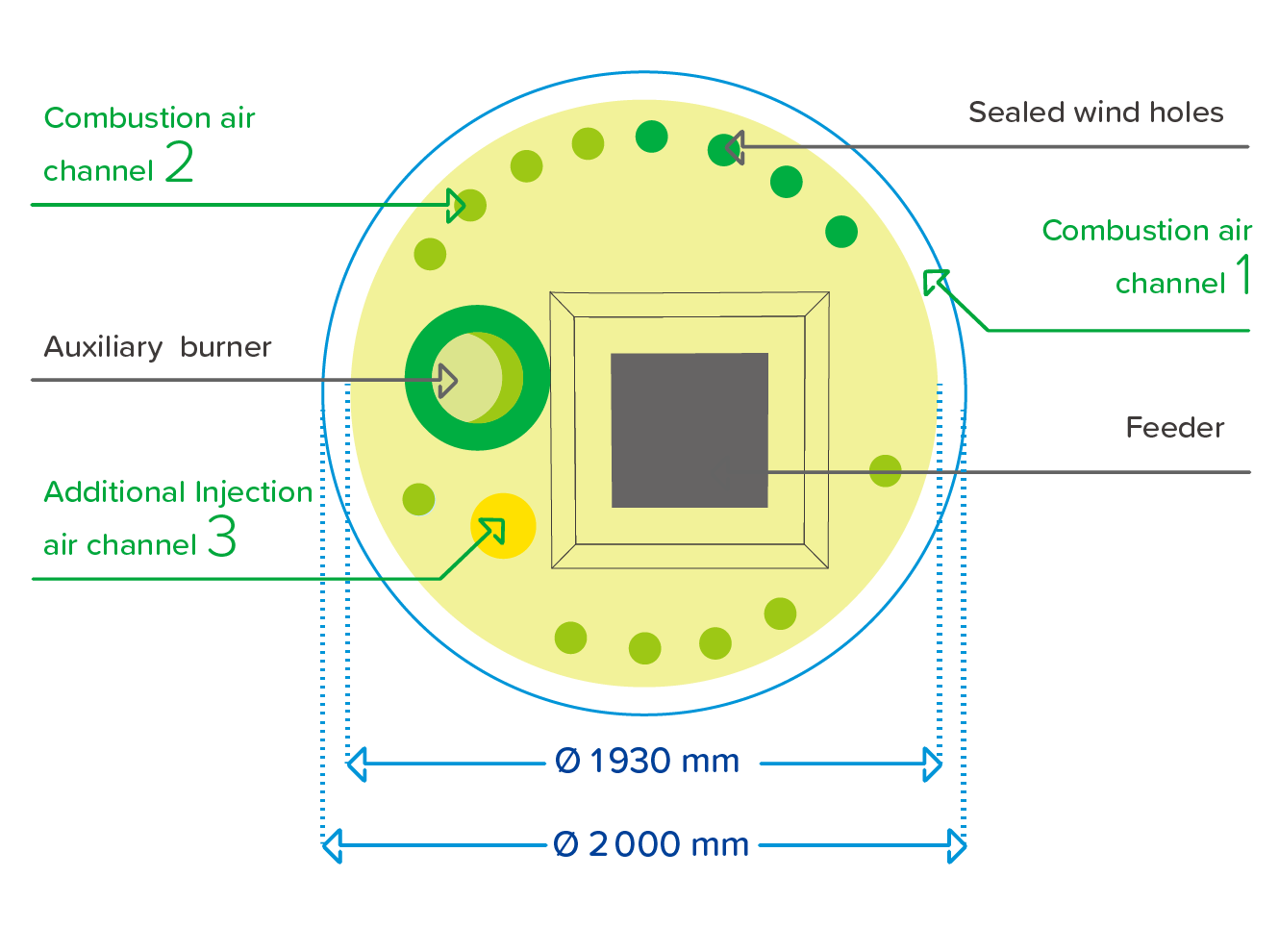
ECOVE adjusted the configuration of combustion air to increase turbulence and accelerate waste burning
These improvement measures show excellent drying effect due to the 250 degree hot air and direct contact between the incoming waste and the hot air exhaust located below the waste feeder. The additional spray air can effectively flow through the waste and provide sufficient combustion air between layers of waste, improving the incineration outcome. Thanks to an increase in air turbulence and the air intake configured on the left, this forms a greater amount of wind on the left side of the front wall than the right side. Moreover, since the wind hole is blocked by large amounts of waste, the pressure on the left side becomes greater than the right side, naturally forming a clockwise vortex along the furnace walls. This can turn the flames and exhaust gas towards the waste feeder and accelerate the waste drying and incineration process. Even when the burner is turned off, spontaneous combustion of the waste can still be maintained. Through these methods, ECOVE has effectively increased the temperature and turbulent flow of combustion air in the Taoyuan Airport Refuse Incineration Plant, allowing the combustion-supporting air inside the rotary kiln to generate a vortex phenomenon, and then forcing the waste in rotary kilns to dry and burn on its own by fully utilizing heat energy released from waste incineration and waste mixing. Moreover, auxiliary fuel consumption is drastically reduced through changes to the methods for preheating and distributing air.
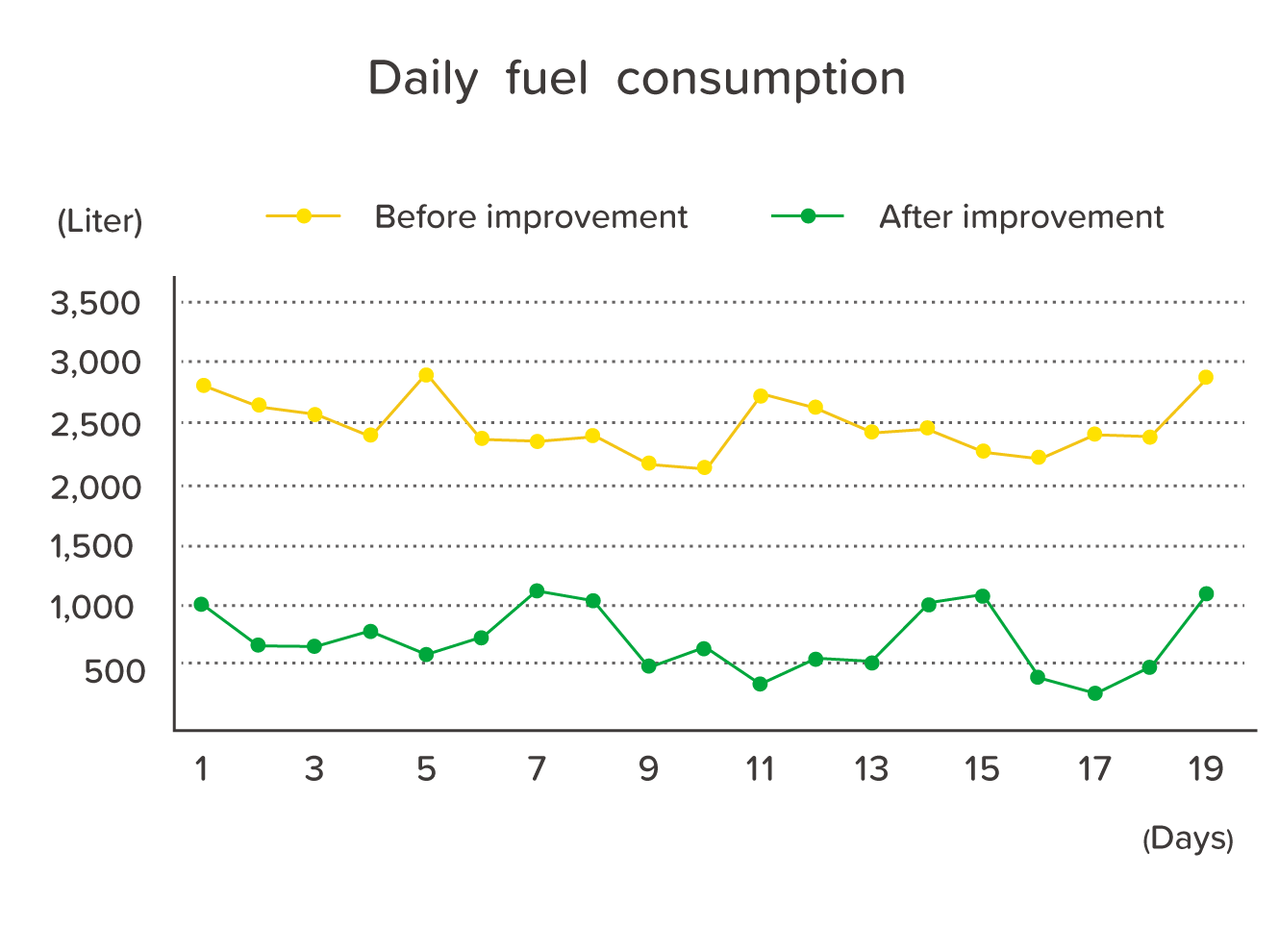
ECOVE optimizes combustion controls to drastically reduce diesel consumption.
Received Thesis Award from the Ministry of Economic Affairs for Improvement Plan
In order to provide the best combustion quality for the Refuse Incineration Plant, ECOVE implemented combustion control improvements from three main aspects of combustion, namely "temperature, time, and turbulence." ECOVE then compiled the research, improvement plans, and calibration testing results into a thesis called "Case Analysis of Rotary Kiln Combustion Air System Optimization," and was awarded the "2021 Green Technology and Engineering Practice Seminar Excellent Thesis Award" by the Industrial Development Bureau, Ministry of Economic Affairs. The award recognized the thesis' contribution to net-zero developments and industry needs. Waste incineration operations require accumulation of experience. From waste mixing, waste ratio, distribution of combustion air, auxiliary burner activation timing, to kiln rotation speed, all aspects need to be adjusted according to the waste characteristics. Real time operational parameter adjustments shall be made to ensure the best combustion quality. The aim of the parameter adjustments is to ensure excellent combustion conditions can be maintained, and the main parameters are temperature, time, and turbulence. Therefore, if the combustion air temperature and turbulence can be effectively increased and a vortex can be created with the air current in the rotary kiln, the heat released in the waste combustion process will be sufficient to induce spontaneous combustion for the next batch of waste, without requiring an external heat source to reach good combustion quality. That way, energy efficiency and combustion efficiency can be maintained.
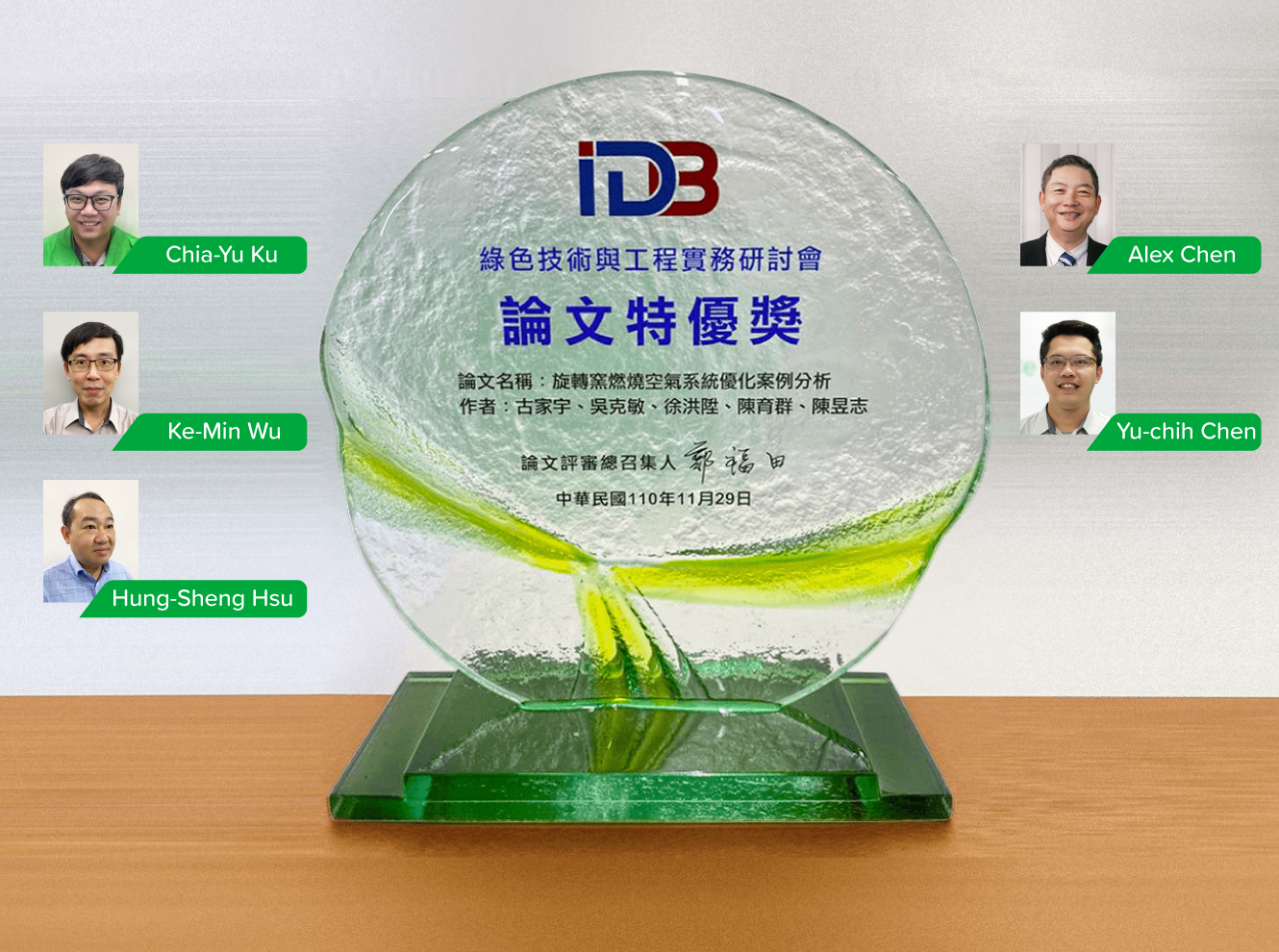
ECOVE has won the Excellent Thesis Award, given by the Industrial Development Bureau, Ministry of Economic Affairs, for a thesis called "Case Analysis of Rotary Kiln Combustion Air System Optimization," which was compiled from the improvement plans and results of Taoyuan Airport Refuse Incineration Plant
As a practitioner in resource cycling, ECOVE upholds the ideal of "Every Resource Counts." The company will continue to improve its technologies and integrated applications, as well as optimize resource recycling performance. ECOVE will continue to optimize operational management and performance through its extensive experience in incinerator integration. By developing more proprietary technologies and carrying out equipment upgrades and improvements, ECOVE will increase the value of resources for reuse and maximize the benefits from every single resource.


